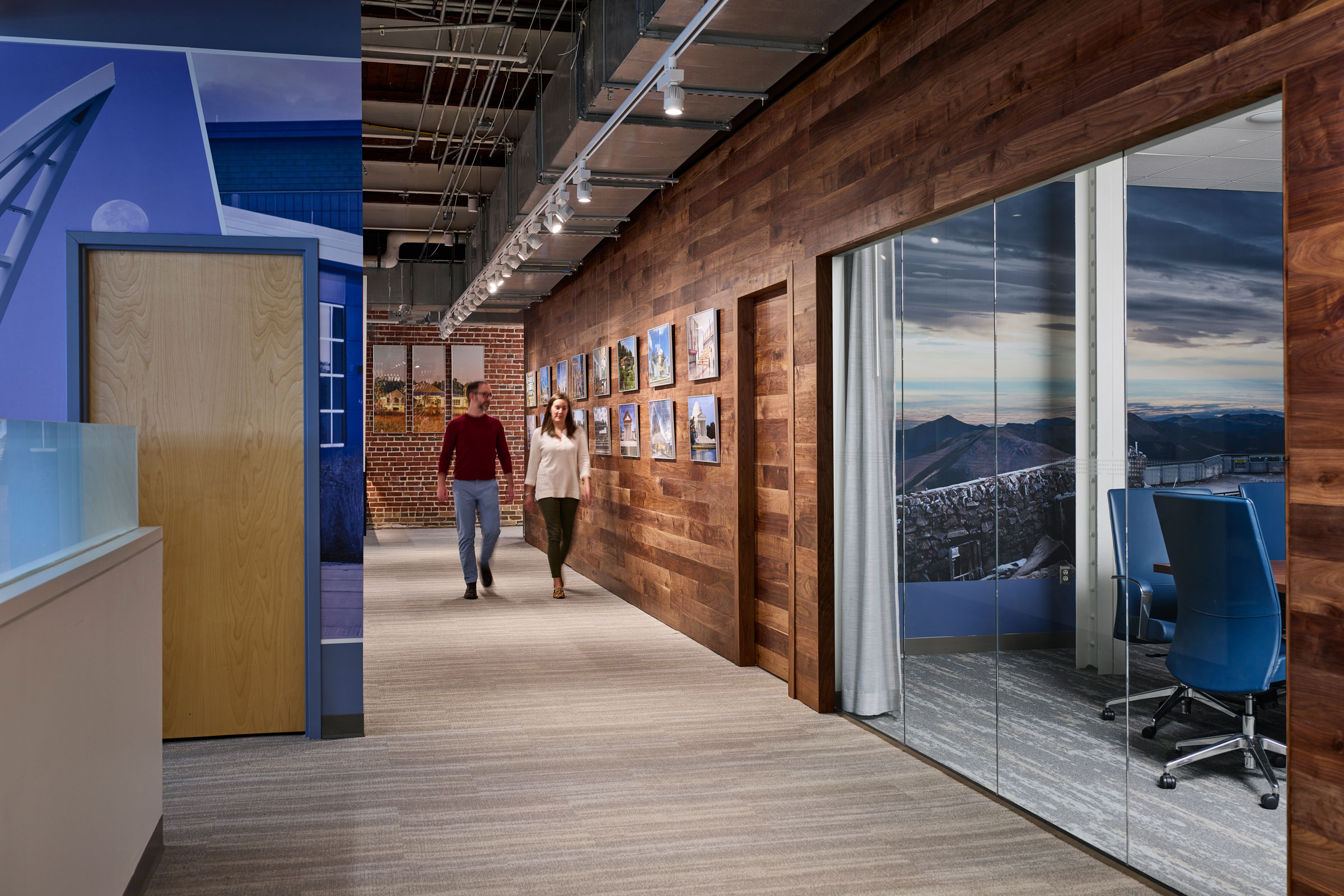Story at a glance:
- GWWO architects bring life to historic spaces in interesting, thoughtful ways.
- The firm’s relocation offered an opportunity to celebrate the past while bringing people together.
- They were able to keep the new building’s original framework, significantly reducing the embodied carbon impact.
For GWWO Architects the past always informs the present. From preserving and rehabilitating historic sites to designing interpretive centers that engage with and explain complex history, meaningful context and narrative are vital to our work—and to our workspaces. From our first Baltimore office building—comprised of joined brick rowhouses in the heart of Mount Vernon, the city’s historic center—to our most recent space in the Stieff Silver building, a century-old, 35,000-square-foot former silver factory, we have valued the activation of historic spaces with modern interpretation.
In 2023 when our lease at the Stieff Silver building ended, the firm’s feelings were mixed. While we were sad to leave behind our home of more than two decades, we also saw in the move a major opportunity to improve how our workspace could support our firm’s culture. Team-based discussion, collaboration, and “productive collisions” have always been integral to our work, but, out of structural necessity, our previous office was divided in two. In relocating we wanted to maintain our firm’s legacy of repurposing historic structures but also find a large, bright, open space where the entire staff could work, learn, socialize, and connect with one another.
At Home with Adaptive Reuse
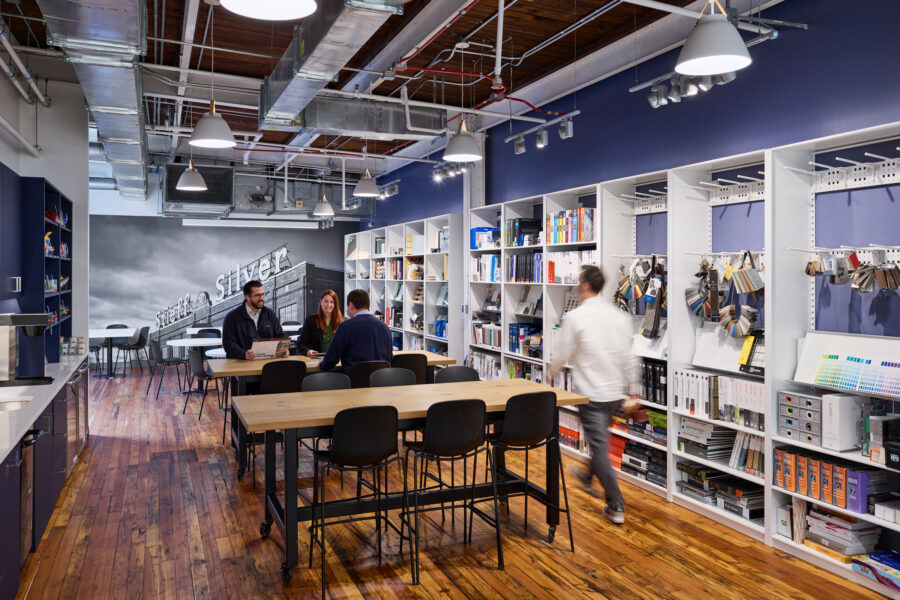
With its brick walls, high ceilings formed by exposed wood decking, and large-scaled windows and skylights, GWWO’s contemporary workspace combines the building’s history with modern amenities. Photo by Tom Holdsworth
In searching for a new location that felt right to our leadership team we discovered the Liberty Building. Built in 1921 and listed on the National Register of Historic Places, the two-story, 45,000-square-foot facility originally served as a factory and has housed operations for the Simmons Mattress Company, Coca-Cola, and Phillips Seafood. Our new home is in the McHenry Row development in the Locust Point neighborhood, where the heritage of heavy industry and shipbuilding coexists with a dense residential area of traditional rowhomes and newly developed apartments, forming a lively, family-oriented community.
Our staff loves the vibrancy and convenience of the countless unique restaurants and bars, many of which have anchored the neighborhood for decades, and the steady stream of pedestrians walking and jogging to local destinations. It’s a short walk to Fort McHenry National Park, the birthplace of our National Anthem and home to a GWWO-designed interpretive center, along with stunning views of the Patapsco River. The Liberty Building embodies Baltimore’s authentic spirit, industrial heritage, and contemporary evolution; it was these qualities that convinced us the building should be our new home.
Our goal in adapting the space was to save as much of the existing infrastructure as possible, both to preserve the building’s character and because the historic materials tell a story of authenticity that speaks directly to the ethos of our firm. With its brick walls, high ceilings formed by exposed wood decking, and large-scaled windows and skylights, our contemporary workspace has converted the original bones of the building into modern amenities. In our kitchen and materials library we were thrilled to discover the original wood floor decking under a carpeted area, enabling us to reveal and refinish the charming material rather than use a newly manufactured tile. Keeping a majority of the building’s original framework also significantly reduced the embodied-carbon impact of our office relocation.
Project Challenges
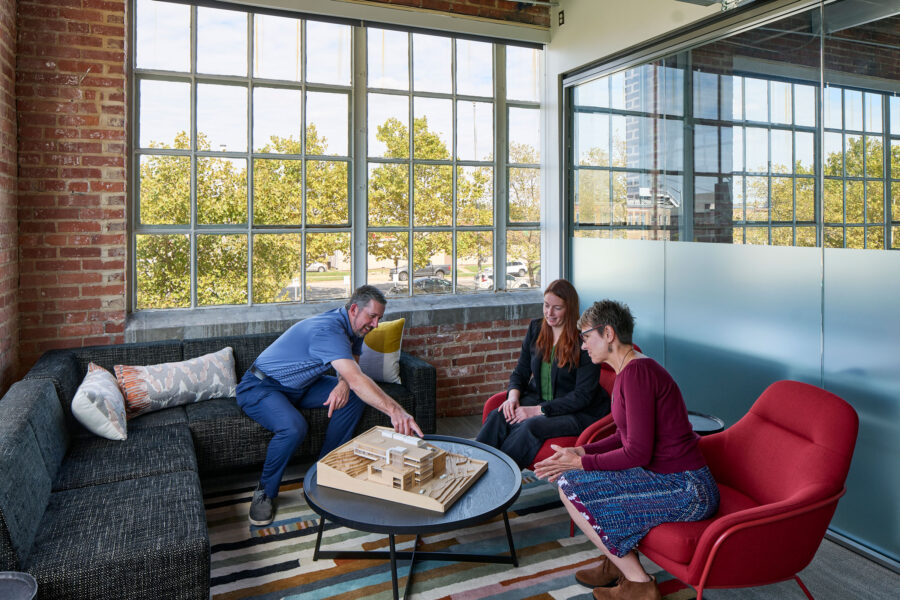
Architects at GWWO review a project in the office breakout space. Photo by Tom Holdsworth
Since its founding GWWO has been dedicated to responsible design through an approach that focuses on working with the land and the context of the site, improving energy performance, reducing our carbon footprint, and thoughtfully selecting sustainable materials. In line with this commitment to sustainability we wanted to prioritize natural, locally sourced or recycled materials and reuse as much as we could from both our new location and our previous office. This presented a challenge, as some pieces were damaged in the construction process and others proved unsuited to the new office space (our lighting fixtures, for instance, did not work in the new office due to voltage differences).
We did manage to repurpose key furnishings from the old office and from the new office’s previous tenants, while more than 400 other pieces—as well as 12,000 pounds of metal, 3,000 square feet of scrap wood, and 900 square feet of corrugated plastic panels—were donated to the local nonprofit Second Chance, diverting all of it from the landfill and enabling others to repurpose and reuse.
For new elements we turned to Baltimore’s craftspeople. A natural oil-finished new walnut wood gallery wall, sourced from the local materials company Brick + Board and installed by the artisans at Studios on Sisson, fits perfectly alongside the building’s existing exposed wood. Our custom walnut conference table, reused from our Stieff Silver office, and new walnut countertops—both handmade by Sandtown Furniture Co.—also contribute to the warm and inviting atmosphere formed by natural materials.
Healthy Design
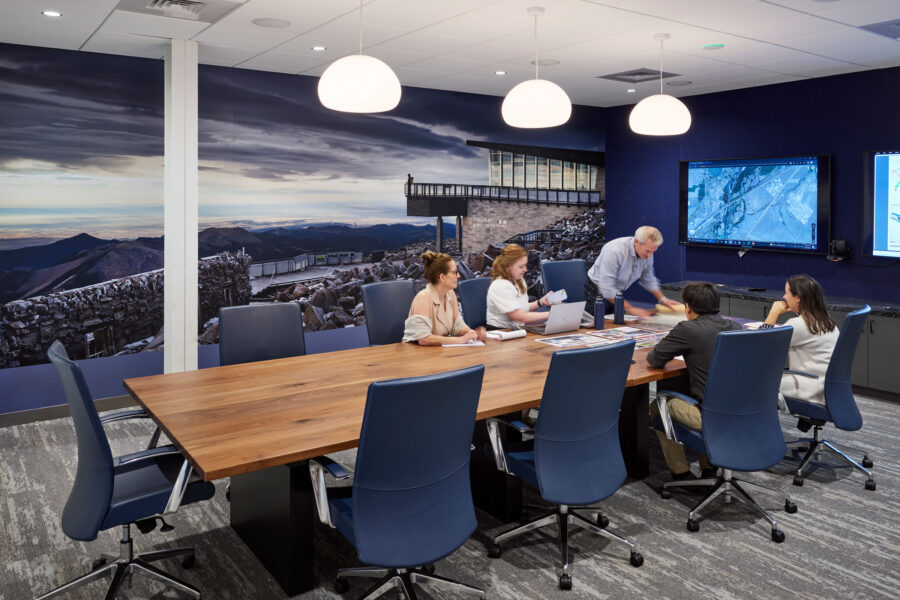
GWWO architects celebrate the past, present, and future with photography in their new office. Photo by Tom Holdsworth
To craft an inspiring, comfortable work environment reflective of our design values and beneficial to our staff, we incorporated several features of the WELL Building Standard, a guideline for creating spaces that facilitate health and well-being. Felt made from recycled plastic water bottles lines walls in enclosed spaces to dramatically improve acoustics, especially for virtual meeting environments. Ceilings were constructed only where necessary for acoustic performance, and offices at the perimeter were encased in glass to ensure natural light and views of our new neighborhood would be accessible to all.
Our workspaces were designed to facilitate both collaboration and personal focus, balancing individual needs with the objectives of the larger team. The literal and figurative heart of the office is the large open area, with inviting and flexible seating that can easily be rearranged to accommodate different-sized groups. The Commons now hosts whole-staff gatherings, project charrettes and discussions, committee meetings, continuing education programs such as design-focused conversations and technical education, weekly happy hour project presentations, and more, fostering our firm’s rich culture of investing in professional development and teambuilding.
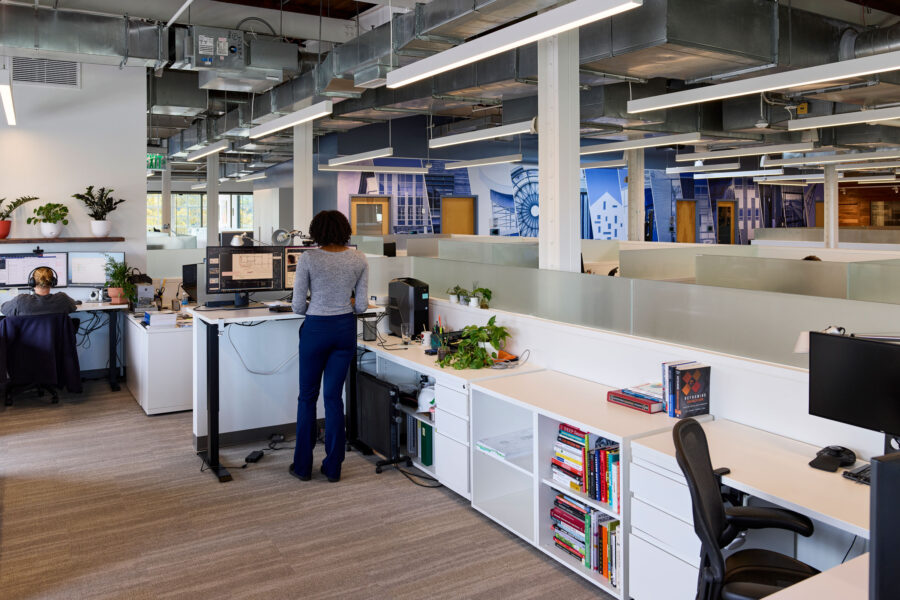
Photo by Tom Holdsworth
The new office also features two shared “corner office” breakout areas—one with a traditional conference table, the other with soft, conversational seating and a virtual reality lab. Extra-thick, acoustically absorptive recycled plastic felt wall compositions complement and balance the exposed brick existing walls. The breakout areas are enclosed with glass walls, consistent with our efforts to provide access to perimeter light for all. The office also includes a quiet zone with its own sound-absorbing decorative woven felt wall hanging by textile designer Petra Vonk, next to two pairs of high-backed sofas forming nooks for focused work and quiet conversation.
A variety of smaller conference areas equipped with comfortable furniture and a large communal kitchen also enable us to nurture our firm’s collaborative culture. A design resource materials library lines an entire wall next to the kitchen’s large seating area, allowing the space to function as a museum-quality display area showcasing innovative products, a social center where people gather and converse over lunch and happy hour, a project layout space, and a meeting area. Creating shared zones that can host many different work styles, preferences, and purposes was a high priority for us.
As a memorial to our former home of multiple decades, a photographic mural of the Stieff Silver Building by local photographer Thomas Holdsworth adorns an entire wall of our gathering space. Each conference room was named for one of the firm’s representative projects, with a custom explanatory plaque mounted at each one to educate current and future staff about our firm’s precedents. Another full-height, 63-foot-long photographic mural, centrally located and visible throughout the office, showcases design details of 17 of our built projects. Meticulously planned and designed to meet the firm’s evolving needs, GWWO’s new office is a warm, welcoming space that balances history and heritage with the ingenuity of the future.

